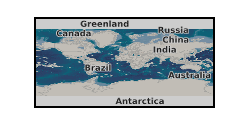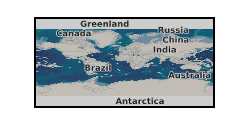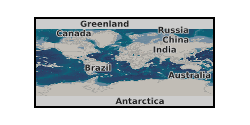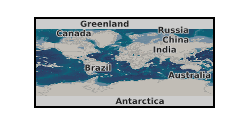service-view
Type of resources
Available actions
Keywords
Contact for the resource
Provided by
Years
Formats
Update frequencies
Service types
Resolution
-

This Web service provides layers containing data from the BGS Geology 625k (DiGMapGB-625) dataset. BGS Geology 625k provides small-scale (1:625 000 scale) bedrock and superficial geology mapping for use at a regional and national level. The bedrock and superficial data are symbolised by lithology and lithostratigraphy, and a bedrock age layer is also provided for the bedrock layer. Additional linear features (faults) and dykes layers are provided for use in conjunction with the bedrock layer. For more information about the digital maps available from the British Geological Survey, please visit https://www.bgs.ac.uk/geological-data/. The data are provided through this service for view and download under the Open Government Licence.
-

This Web service provides layers which are spatial indexes to the coverage of BGS (British Geological Survey) geological, geophysical, and hydrogeological maps from various different map series held by BGS in the National Geoscience Data Centre (NGDC). The layers include the spatial footprint of each map, and metadata including the map title, map series, nominal survey year, copyright year, scale, base material, colouration, the availability of an image, and, if available, a link to an image of the map. It includes maps from the start of systematic geological survey work in the 1830s, through to more recent BGS mapping. The maps referenced by this Web service are historical, and are not the same as the latest digital geological mapping from BGS.
-

This Web service provides a spatial index into the ground investigation (also known as site investigation) reports collection held by the British Geological Survey (BGS) in the National Geoscience Data Centre (NGDC). Because of the long history and composite nature of this collection, and the different methodologies which have been used to locate and spatially reference the reports, the accuracy of report areas varies within the collection. Some reports have been scanned, and where available, a download link to the scan is provided.
-

This Web service provides the BGS heat flow dataset as a Web Map Service (WMS). The British Geological Survey (BGS) heat flow model (United Kingdom) is derived from a catalogue of legacy heat flow data points and ground-heat modelling. The model portrays heat flow as a continuous modelled surface, interpolated between observation and estimation points. Heat flow data is typically used to determine temperatures beneath the ground surface, and model how much thermal energy may be recovered from or stored within.
-

BGS soil property data layers including parent material, soil texture, group, grain size, thickness and European Soil Bureau description. These data are delivered under the terms of the Open Government Licence (http://www.nationalarchives.gov.uk/doc/open-government-licence/), subject to the following acknowledgement accompanying the reproduced BGS materials: Contains British Geological Survey materials copyright NERC [year]. Contact us if you create something new and innovative that could benefit others usingbgsdata@bgs.ac.uk.
-

Data from the DiGMap covering the whole of the United Kingdom at a scale of 1:625 000 is available in this OGC WMS service for personal, non-commercial use only. The service is a contribution to the OneGeology-Europe initiative. The layers can be displayed either by age or by lithology. For more information about the digital maps available from the British Geological Survey, please visit https://www.bgs.ac.uk/datasets/bgs-geology/
-

This Web service provides geophysical log data held by the British Geological Survey (BGS) within the National Geoscience Data Centre (NGDC). Two layers are provided. The 'geophysical logs' layer is an index into the boreholes for which BGS holds digital and hard-copy geophysical log data. Metadata about each borehole are included, as well as a link to where digital geophysical log data may be downloaded, where available. The 'geophysical logs - onshore hydrocarbon wells' layer is a subset of the 'geophysical logs' layer which includes only onshore hydrocarbon well boreholes.
-

This Web service provides the Indicative Atlas of Radon Potential for Great Britain dataset. Every building contains radon (Rn) but the levels are usually low. The chances of a higher level depend on the type of ground. The UK Health Security Agency (UKHSA) and the BGS have published a map showing where high levels are more likely. The darker the colour, the greater the chance of a higher level of radon. The chance is less than one home in a hundred in the white areas and greater than one in three in the darkest areas.
-

The 1:50 000 scale GeoSure (natural ground stability) data covering the map sheets for Loughborough and Kilmarnock are available in this OGC WMS service for personal, non-commercial use only. This service is a contribution to the OneGeology-Europe initiative. For information about more of the British Geological Survey's maps and other digital products please visit http://www.bgs.ac.uk/products. MapServer software is used to provide this OGC WMS service.
-

Data from the British Geological Survey's GeoIndex Collections theme are made available for viewing here. GeoIndex is a website that allows users to search for information about BGS data collections covering the UK and other areas world wide. Access is free, the interface is easy to use, and it has been developed to enable users to check coverage of different types of data and find out some background information about the data. More detailed information can be obtained by further enquiry via the web site: www.bgs.ac.uk/geoindex.
 NERC Data Catalogue Service
NERC Data Catalogue Service